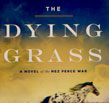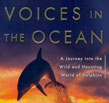 |
 |
07-24-09: Ray Bradbury's 'The Martian Chronicles: The Complete Edition' : One Giant Leap for Book Readers
When I say giant, I mean giant. I'm talking 750 pages with full-color plates. And that's not to mention the book itself. How many minds were subverted to the world of science friction by Ray Bradbury's classic? How many paperback versions of this haunt the garages of science fiction readers now? I'm pretty sure I'm among them.
Some things just need to happen. The Martian Chronicles: The Complete Edition' (Subterranean Press and PS Publishing ; December 2009 ; $300) is simply inevitable. Bradbury's classic collection of stories not only brought science fiction to the attention of the world, it did something more. 'The Martian Chronicles' demonstrated that science fiction was a very American form of Literature, and for me, it always seemed that as it spread through our culture, Bradbury took on the mantle of a Mark Twain, commenting on the American psyche with a snappy sense of humor and a peculiar imagination.
'The Martian Chronicles: The Complete Edition' is a pretty unique endeavor, marrying two important independent publishers of speculative fiction, Subterranean Press of the US of A and PS Publishing of the UK. It deserves two publishers. You'll get three big chunks of prose. The first is, of course, 'The Martian Chronicles,' from the "Rocket Summer" of 1999 through
"The Million Year Picnic." Here it is in a huge volume, very nicely printed and eminently readable, a classic work that can once again live on your shelves. By itself and of itself, a book you really need. But wait, yes, there's more.
You'll get "The Other Martian Tales," 23 (if I counted right) associated short stories which are either uncollected or unpublished (7 stories). That's a huge find so far as I'm concerned. Of course that's not all. You'll get both the 1963(!) screenplay and the 1997 screenplay. Reading these creates a really interesting mind map of the past, the present, the future ... Bradbury really knew how to grab the eternal out of the ephemeral.
Now, add to this an introduction by John Scalzi, two by Bradbury, a "How I Wrote This Book" by Bradbury and five full-color plates by Edward Millar. Indeed, the eternal from the ephemeral.
For me, 'The Martian Chronicles' is such a poignant landmark in my reading, because the stories are so human, so, well ... almost mundane in a way, but also they mark out the edges of a reality infused not with advanced science so much as the magic of possibility. Back when I read 'The Martian Chronicles,' that "Rocket Summer" of 1999 was a science fiction future, full of potential that I simply could not imagine. I'd carefully cut out the pages of Look and Life Magazines when they ran photos from the Gemini and then the Apollo missions. I knew we'd have a base on the moon, by then. Perhaps, I thought, I'll be able to go to Mars.
|
|
07-22-09: Ray Garton is 'Bestial' : At His Leisure
It's been far too long since I just sat myself down and tucked into a cheesy horror fiction mass market paperback; but the recent arrival of Ray Garton in town gave me an excuse, and thus I found myself once again at leisure with 'Bestial' (Dorchester Publishing / Leisure Books ; March 31, 2009 ; $7.99), and wondering just how such a book would strike me. After all, I'd spent a good deal of the 1980's feasting on such fare, but it had been a while. Did I enjoy being shocked and scared? Could I be shocked and scared?
Seven pages into 'Bestial,' I was just about blown away. Garton crosses so many lines with such aplomb ... and then by page 16, so many more ... Now THIS is what cheap paperback horror fiction is all about. Yes, I quickly realized that 'Bestial' is a follow-up to 'Ravenous' (Dorchester Publishing / Leisure Books ; April, 2008 ; $7.99), and damn I wanted to read that one too, but hell, I was hooked and hooked good! 'Bestial' is one hell of a fun book to read, what with its terrorizing taboo trampling action, but you know it isn’t just about shock. 'Bestial' is good where it counts, with great writing driven by a sensibility that clearly doesn't know where over-the-top may reside.
The two opening scenes, aside from offending every sensibility you could imagine, are superbly-written scenes of suspense that set up the small town of Big Rock, on the coast of California, as a haven for monsters. Martin Burgess, a rich and famous horror writer, sends two investigators, Gavin Keogh and Karen Moffet (from 'Ravenous'), to the small town of Big Rock, where he hopes they'll find research fodder for one of his novels. Of course, Karen and Gavin don’t need to worry about the fodder finding them; they need to worry about becoming fodder for something that is, well, bestial.
Garton's in great form with 'Bestial.' You can practically hear his glee as things go from chop to blend to purees faster than a bartender can hit the buttons on a blender. And while 'Bestial' takes itself and its subject seriously enough so as not to be jokey, comedic horror, it's also just one hell of a lot of fun, and often very slyly funny. Perhaps it's just because the author is clearly having such a good time, but whatever the reason, the prose is really sly and subversive. You'll have to switch back and forth between grinning and grinding your teeth.
Garton's also got a one to pick with this one. A child of the Seventh Day Adventist Church himself, he exposes that sect as a very peculiar cult with practices that might turns its believers into either dog food or mad dogs. Seventh Day Adventists are strongly advised not to read this book, but others will find Garton's portrait of cultish Christianity just about as disturbing as scenes in which, well ... the less said, the better. For all the groups that Garton's novel may offend in general, in the final estimation, the Seventh Day Adventists are pretty much just another shrimp on his barbie. Maybe they get a bit of extra crisping, though.
Now, if you've not read 'Ravenous,' I'd suggest you at least pick that one up beforehand, though it, in turn has connections to Garton's iconic 'Live Girls' and the follow-up, 'Night Life.' That said, I picked up 'Bestial' and got what was going on just fine. However, I do like Gavin and Karen, and I'd like to see more of their work. Garton promises this is going to come. And you know, for all the death and worse that rains down in 'Bestial,' there is a big ol' sunny happy thought at the core — cheap paperback horror is here to stay, and it can still kick your reading ass from here to at least Big Rock, California. After that, hope for your eternal reward, and that Garton isn’t in charge of it.
|
|
07-21-09: Take 'Flight 6' : Visionary Graphic Fiction
Occupying a place between magazine and anthology, the 'Flight' series is, I realized, a classy version of Heavy Metal for the 21st century. 'Flight: Volume Six' (Villard Books / Random House ; July 21, 2009 ; $25) edited by Kazu Kibuishi is the latest version and the often astonishing visionary graphic fiction within offers a wide variety, some dark and edgy stuff, some abstract and almost innocent. But 'Flight' never sacrifices quality simply as a means of declaring independence.
From the lovely cover by editor Kazu Kibuishi to the charming "Long-Winded" by Mike Dutton that concludes this installment of 'Flight,' you're going to find the science of Heavy Metal at work, but with a different artistic sensibility. 'Flight' is refined, and happily restrained when it comes to gratuitous sex and violence. There is a touch of violence, but what you have in this volume, at least, is a visionary sensibility. 'Flight' is, appropriately enough, a real sensawunda sort of deal.
This is apparent from the get-go, even past editor Kibuishi's gorgeous cover, with Michael Gagné's "The Saga of Rex: Soulmates." It's a bit reminiscent of 'Gon,' but done up and printed in stunning color. Like 'Gon,' there is no dialogue, just a series of images that tell a lovely story of speculative fiction, with sweet and cute animals. Follow this up with "The Excitingly Mundane Life of Kenneth Shuri," (art and story by JP Ahonen, colors by Teemu Matinlauti) and you set up a nice dynamic. Job hunting has never been such fun ... or quite so messy! "Dead at Noon" by Rodolphe Guenoden (color by Euan Mactavish) brings back the no-dialogue visionary style but with an Old West twist and story. Phil Craven's "Epitaph" is a stripped down science fiction story without sex or violence, while "Walters" by Cory Godbey dives again into no-dialogue visions with a distinctive style that I've not seen before. It's really quite striking.
"Dead Bunny," written by Nikki Damon with art by Justin Ridge, features an opening page that is literally to die for. It's funny, edgy and ultimately, quite charming. "Cooking Duel" by Bannister and Grimaldi, lives up to its title and includes the recipe, while "Fish and Chips: Even the Smartest Creatures" seems to be tailor-made for animation on Cartoon Neckwork's Adult Swim. Andrea Offerman's "Mate" and Rad Sechrist's "Kidnapped" are stylized, sans dialogue and both quite weird in an unusual and appealing manner. They’re so different in execution, however, you may experience the visual equivalent of whiplash. But that' a good thing! Kazu Kibuishi's "Phantoms" is a Wild West ghost story with gorgeous illustrations and a nicely understated storyline. Villard Books prints it all on heavy paper — perfectly. 'Flight: Volume 6' is a great sampling of superb graphic storytelling, edgy and daring. Even if you’re not interested in the form it'll do what it's supposed to do: catch your eye.
|
|
07-20-09: A Review of 'Where the Dead lay' by David Levien : Rough, polished and powerful
Occasionally, I allow myself a bit of indulgence. So, hot on the heels of reading the immensely enjoyable 'City of the Sun' by David Levien, I tucked into the second Frank Behr novel, 'Where the Dead Lay' with, I must say a bit of apprehension. 'City of the Sun' was a stripped-to-muscle work of smart, powerful prose. The straight-line story was a big part of the appeal, and it was clear that 'Where the Dead Lay' was going to complicate things a bit.
But Levien seems to have a handle on his world, and 'Where the Dead Lay' is even more satisfying than 'City of the Sun.' It’s a great sequel that looks at the consequences of family with a cold, hard eye that is still engagingly sympathetic. Levien is clearly planning for the long run, and the care he took with 'City of the Sun' really pays off here.
Part of what Levien did with 'City of the Sun' was to, as an author, echo the laconic style of his main character on all levels; prose, plot and characterization were all ratcheted down in 'City of the Sun.' 'Where the Dead Lay' opens the world up — just a bit, while retaining the gritty and intense sensibility of the first. And hell, let me just say that you'll meet a family in this novel that you will never forget. Levien has one of the best eyes for creating lower middle-class and working class families that I've ever encountered. 'Where the Dead Lay' brings back some key characters from the first novel and adds some new folks to the mix. Here's a link to my review.
|
|
|
 |
|
|
|




